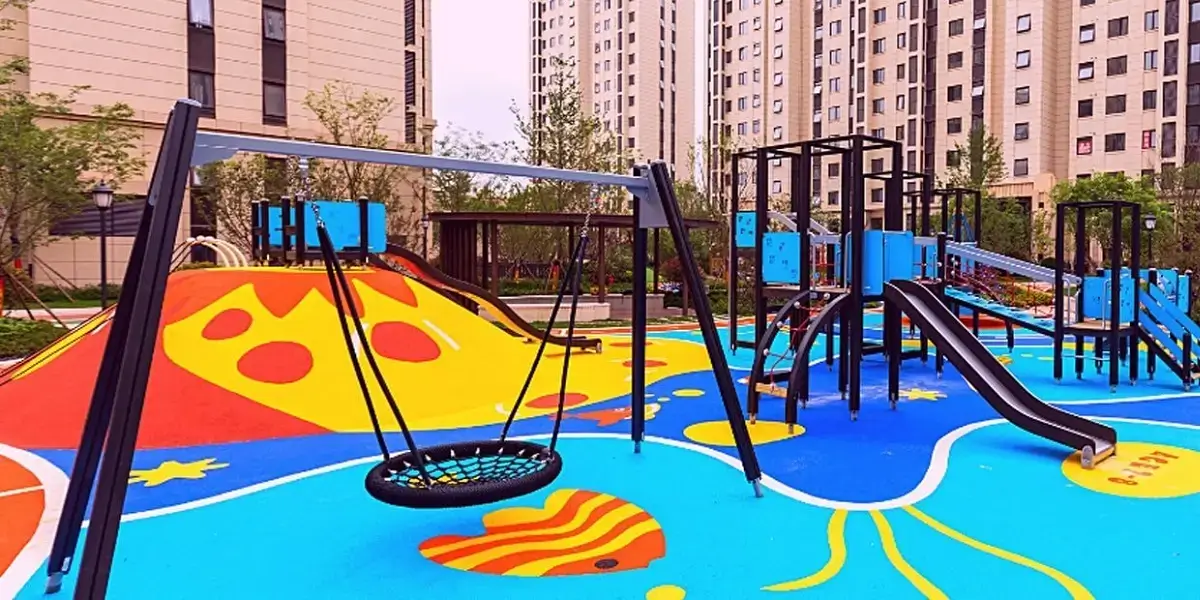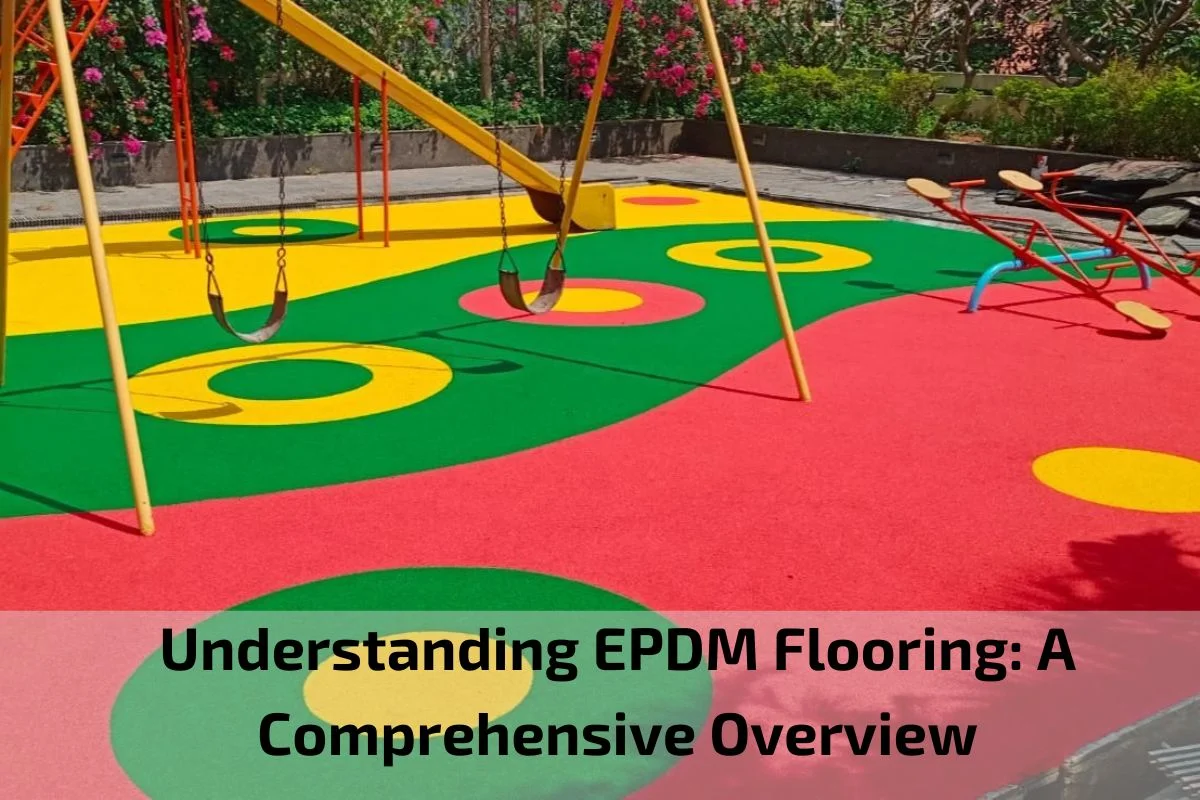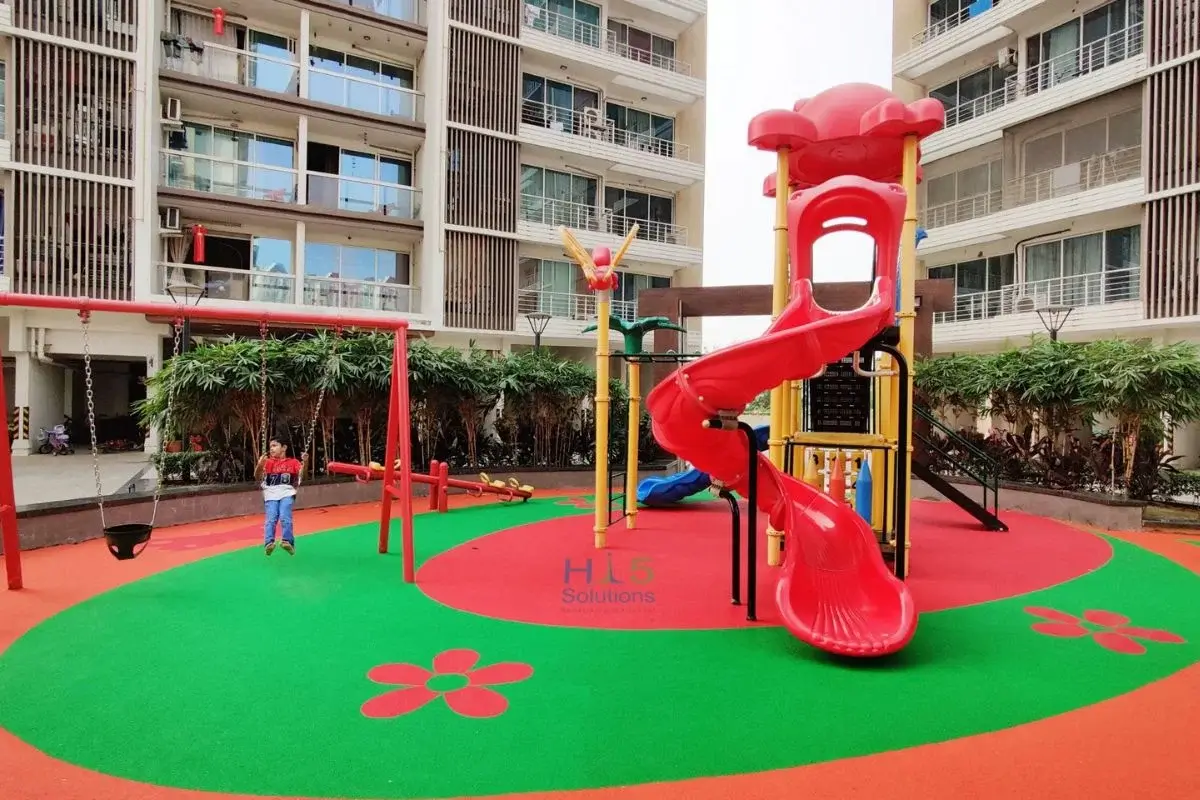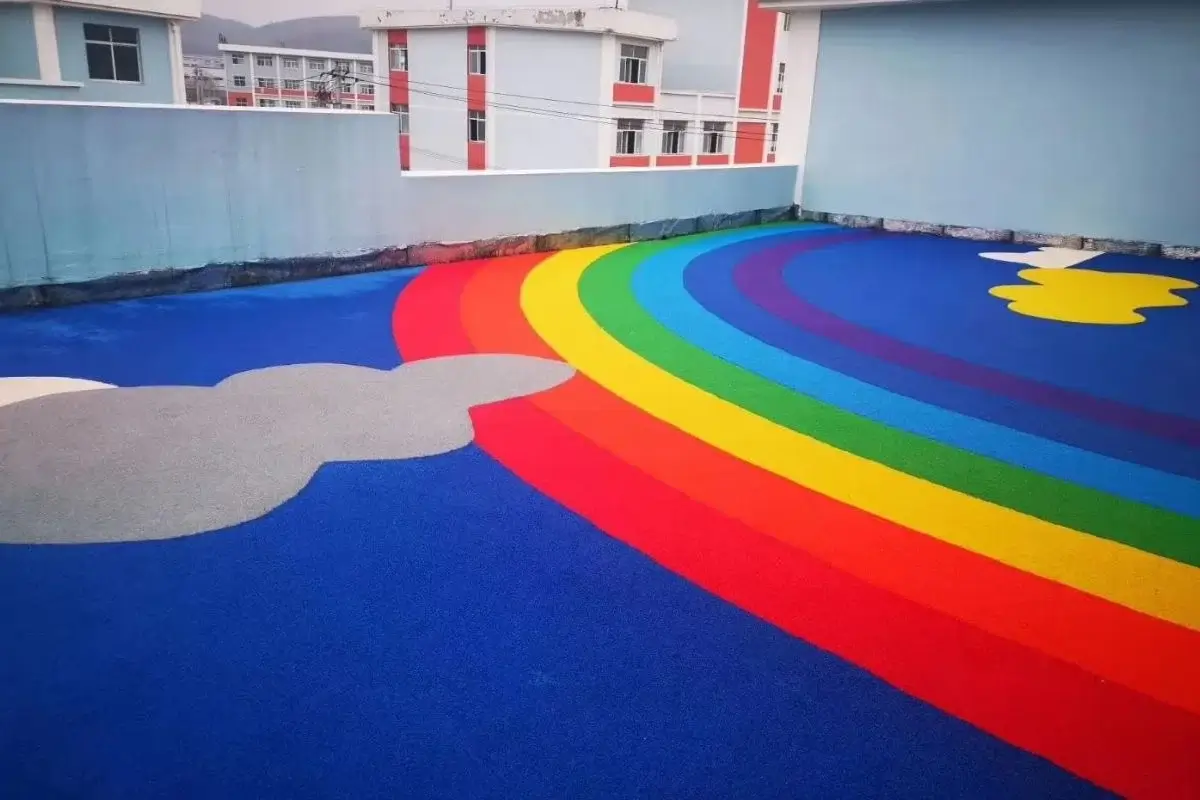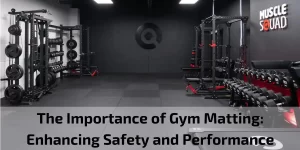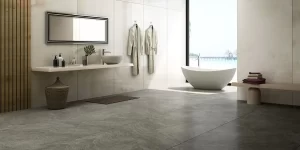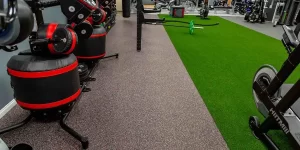EPDM (Ethylene Propylene Diene Monomer) flooring has emerged as a versatile and popular choice for various indoor and outdoor applications. Its unique properties and numerous advantages make it a preferred flooring solution in commercial, residential, and recreational settings. In this comprehensive overview, we delve into the world of EPDM flooring, exploring its composition, benefits, applications, and installation techniques.
EPDM flooring is a synthetic rubber material known for its durability, resilience, and versatility. It is composed of a blend of ethylene, propylene, and diene monomer compounds, which are vulcanized to create a seamless and resilient surface. EPDM flooring is available in a variety of colors, thicknesses, and textures, offering endless design possibilities for architects, designers, and homeowners.
Importance of EPDM Flooring in Modern Spaces
EPDM (Ethylene Propylene Diene Monomer) flooring has become increasingly significant in modern spaces due to its exceptional properties and versatility. Here’s why EPDM flooring holds importance in contemporary environments:
- Durability and Longevity: EPDM flooring is renowned for its durability and resilience, making it an ideal choice for high-traffic areas in both indoor and outdoor spaces. Its ability to withstand heavy foot traffic, harsh weather conditions, and UV exposure ensures long-lasting performance, reducing the need for frequent replacements and maintenance.
- Versatility in Design: EPDM flooring offers a wide range of design possibilities, including various colors, patterns, and textures. This versatility allows architects, designers, and homeowners to create customized flooring solutions that complement the aesthetics and functionality of diverse spaces. Whether it’s a vibrant playground, a sleek rooftop terrace, or a contemporary office environment, EPDM flooring can be tailored to suit the unique design requirements of any setting.
- Safety and Comfort: Safety is paramount in modern spaces, and EPDM flooring excels in providing a safe and comfortable environment for occupants. Its cushioned surface offers excellent shock absorption, reducing the risk of injuries from slips, trips, and falls. Additionally, EPDM flooring maintains a comfortable temperature underfoot, enhancing the overall experience of users in both indoor and outdoor settings.
- Low Maintenance Requirements: In today’s fast-paced world, convenience and efficiency are key considerations in space management. EPDM flooring requires minimal maintenance compared to other flooring materials, making it a practical choice for busy environments. Routine cleaning and occasional inspections are typically all that’s needed to keep EPDM flooring looking fresh and vibrant, saving time and resources in the long run.
- Sustainability and Eco-Friendliness: As environmental awareness continues to grow, the importance of sustainable building materials cannot be overstated. EPDM flooring is inherently eco-friendly, as it can be manufactured using recycled rubber materials and is fully recyclable at the end of its lifespan. By choosing EPDM flooring, designers and homeowners contribute to reducing waste and promoting sustainability in the built environment.
- Adaptability to Diverse Applications: EPDM flooring’s adaptability to various applications further underscores its importance in modern spaces. From playgrounds and sports facilities to commercial complexes and residential areas, EPDM flooring can be used in a wide range of settings to enhance functionality, aesthetics, and user experience.
Definition and Composition of EPDM Flooring
EPDM (Ethylene Propylene Diene Monomer) flooring is a type of synthetic rubber flooring renowned for its durability, versatility, and resilience. Composed primarily of ethylene, propylene, and diene monomer compounds, EPDM flooring is engineered to withstand a wide range of environmental conditions and heavy usage.
The composition of EPDM flooring typically includes the following key components:
- Ethylene: Ethylene is a hydrocarbon compound derived from petroleum and natural gas. It serves as the primary building block for EPDM flooring, providing flexibility, stability, and chemical resistance to the material.
- Propylene: Propylene is another hydrocarbon compound used in the production of EPDM flooring. It enhances the durability and weather resistance of the material, making it suitable for outdoor applications where exposure to UV radiation, moisture, and temperature fluctuations is common.
- Diene Monomer Compounds: Diene monomers, such as 5-ethylidene-2-norbornene (ENB), are added to the EPDM formulation to improve cross-linking and enhance the material’s mechanical properties. Diene monomers play a crucial role in increasing the elasticity, tear resistance, and tensile strength of EPDM flooring.
- Fillers and Additives: Fillers and additives are incorporated into the EPDM mixture to enhance specific properties and performance characteristics. These may include reinforcing agents, such as carbon black or silica, which improve the material’s strength and abrasion resistance. Other additives, such as antioxidants, UV stabilizers, and colorants, may also be included to protect the EPDM flooring from degradation and enhance its aesthetic appeal.
Advantages and Disadvantage of EPDM Flooring
EPDM (Ethylene Propylene Diene Monomer) flooring offers several advantages that make it a popular choice for various applications. However, it also has certain disadvantages that should be considered. Let’s explore both aspects:
Advantages:
-
Durability: EPDM flooring is highly durable and resistant to wear and tear, making it suitable for high-traffic areas in both indoor and outdoor settings. It can withstand heavy foot traffic, UV exposure, and harsh weather conditions without deteriorating or losing its structural integrity.
-
Versatility: EPDM flooring comes in a wide range of colors, patterns, and textures, offering endless design possibilities for architects, designers, and homeowners. It can be customized to match the aesthetic and functional requirements of different spaces, from playgrounds and sports facilities to commercial complexes and residential areas.
-
Safety: EPDM flooring provides excellent shock absorption and slip resistance, reducing the risk of injuries from slips, trips, and falls. Its cushioned surface offers a comfortable and safe environment for users, making it ideal for playgrounds, sports facilities, and recreational areas where safety is paramount.
-
Low Maintenance: EPDM flooring requires minimal maintenance compared to other flooring materials. Routine cleaning and occasional inspections are typically all that’s needed to keep EPDM flooring looking fresh and vibrant, saving time and resources in the long run.
-
Sustainability: EPDM flooring is eco-friendly and sustainable, as it can be manufactured using recycled rubber materials and is fully recyclable at the end of its lifespan. By choosing EPDM flooring, designers and homeowners contribute to reducing waste and promoting sustainability in the built environment.
Disadvantages:
-
Cost: EPDM flooring can be more expensive upfront compared to other flooring options, such as vinyl or carpet. However, its durability and long lifespan often justify the initial investment over time.
-
Installation Complexity: The installation of EPDM flooring may require specialized skills and equipment, particularly for larger or more complex projects. Improper installation can lead to issues such as seams and wrinkles, affecting the appearance and performance of the flooring.
-
Limited Color Options: While EPDM flooring offers a wide range of colors and patterns, the customization options may be limited compared to other flooring materials. Designers and homeowners may need to compromise on certain aesthetic preferences to accommodate the available options.
-
Susceptibility to Staining: EPDM flooring may be susceptible to staining from certain substances, such as oil, grease, and rubber tire marks. Prompt cleaning and maintenance are essential to prevent stains and preserve the appearance of the flooring over time.
-
Environmental Impact: While EPDM flooring is considered eco-friendly and sustainable, the manufacturing process may still have environmental implications, particularly in terms of energy consumption and emissions. Choosing EPDM flooring with recycled content and eco-friendly production practices can help mitigate its environmental impact
Choosing the Right EPDM Flooring
Selecting the appropriate EPDM (Ethylene Propylene Diene Monomer) flooring is crucial to ensure optimal performance, durability, and aesthetics. Here are key factors to consider when choosing the right EPDM flooring for your project:
- Thickness and Density: EPDM flooring comes in various thicknesses and densities, which affect its durability and resilience. Thicker and denser EPDM flooring offers better impact resistance and longevity, particularly in high-traffic areas. Consider the intended use and level of foot traffic when selecting the appropriate thickness and density for your application.
- Color and Design Options: EPDM flooring is available in a wide range of colors, patterns, and designs to suit different aesthetic preferences and design schemes. Choose colors and patterns that complement the overall theme and style of the space, whether it’s a vibrant playground, a sleek gymnasium, or a modern office environment.
- Surface Texture: Consider the surface texture of EPDM flooring, as it can impact slip resistance, traction, and overall comfort underfoot. Textured surfaces provide enhanced grip and stability, making them ideal for wet or slippery areas such as pool decks and locker rooms. Smooth surfaces, on the other hand, offer ease of maintenance and a sleek appearance suitable for indoor environments.
- Substrate Compatibility: Ensure that the EPDM flooring is compatible with the substrate or underlying surface where it will be installed. Proper substrate preparation, including cleaning, leveling, and priming, is essential to ensure adhesion and prevent issues such as bubbling, peeling, or delamination of the flooring.
- Installation Method: Consider the installation method required for the EPDM flooring, as it can impact the overall cost, timeline, and performance of the flooring system. EPDM flooring can be installed using adhesive bonding, loose-lay interlocking systems, or fully adhered systems, depending on the specific requirements of the project and the substrate conditions.
- Budget Considerations: Evaluate the overall cost of EPDM flooring, including materials, installation, and maintenance, in relation to your budget constraints and project priorities. While EPDM flooring may have a higher upfront cost compared to other flooring options, its durability, longevity, and low maintenance requirements often justify the investment over time.
- Environmental Considerations: Choose EPDM flooring products that prioritize environmental sustainability and eco-friendliness. Look for certifications such as LEED (Leadership in Energy and Environmental Design) or Green Guard that indicate compliance with environmental standards and regulations. Opt for EPDM flooring with recycled content and minimal environmental impact throughout its lifecycle.
- Manufacturer Reputation and Warranty: Select EPDM flooring products from reputable manufacturers with a track record of quality, reliability, and customer satisfaction. Review product warranties and guarantees to ensure adequate coverage and protection against manufacturing defects and premature wear.
Maintenance and Care Tips for EPDM Flooring
Maintaining and caring for EPDM (Ethylene Propylene Diene Monomer) flooring is essential to preserve its appearance, functionality, and longevity. Here are some valuable tips to keep your EPDM flooring in top condition:
Regular Cleaning: Establish a routine schedule for cleaning your EPDM flooring to remove dirt, dust, and debris. Sweep or vacuum the surface regularly to prevent buildup and maintain a clean appearance.
Mild Detergent Solution: Use a mild detergent solution and warm water to mop the EPDM flooring periodically. Avoid using harsh chemicals or abrasive cleaners, as they may damage the surface of the flooring. Rinse thoroughly with clean water to remove any soap residue.
Spot Cleaning: Promptly clean up spills and stains on the EPDM flooring to prevent them from setting and becoming difficult to remove. Use a soft cloth or sponge with mild detergent to spot clean the affected areas. For stubborn stains, gently scrub the surface with a non-abrasive scrubbing pad.
Avoid Abrasive Tools: Avoid using abrasive cleaning tools such as steel wool pads or abrasive scrub brushes, as they can scratch or damage the surface of the EPDM flooring. Use soft cloths, sponges, or non-abrasive scrubbing pads for gentle cleaning and maintenance.
Preventative Measures: Place mats or rugs at entryways and high-traffic areas to trap dirt and moisture before it reaches the EPDM flooring. Use furniture pads or coasters to prevent scratching and indentation from heavy furniture or equipment.
Avoid Standing Water: Prevent standing water from accumulating on the surface of the EPDM flooring, as it can seep into the seams and edges, causing damage and promoting mold and mildew growth. Wipe up spills and excess moisture immediately to maintain a dry and clean environment.
Regular Inspection: Inspect the EPDM flooring periodically for signs of wear, damage, or deterioration. Repair or replace any damaged or worn areas promptly to prevent further damage and maintain the integrity of the flooring system.
Avoid Harsh Chemicals: Avoid using harsh chemicals, solvents, or petroleum-based products on the EPDM flooring, as they can cause discoloration, deterioration, or damage to the material. Use cleaning products that are specifically formulated for rubber flooring and follow the manufacturer’s recommendations.
UV Protection: If the EPDM flooring is installed in an outdoor area exposed to direct sunlight, consider applying a UV-resistant coating or sealant to protect the surface from UV radiation and fading.
Professional Maintenance: Consider hiring professional cleaning and maintenance services periodically to deep clean and restore the appearance of the EPDM flooring. Professional cleaning methods and equipment can effectively remove embedded dirt, stains, and contaminants, extending the lifespan of the flooring
Conclusion
In conclusion, maintaining and caring for EPDM (Ethylene Propylene Diene Monomer) flooring is essential to uphold its appearance, functionality, and longevity. By following the maintenance and care tips outlined above, you can ensure that your EPDM flooring remains clean, attractive, and safe for occupants.

